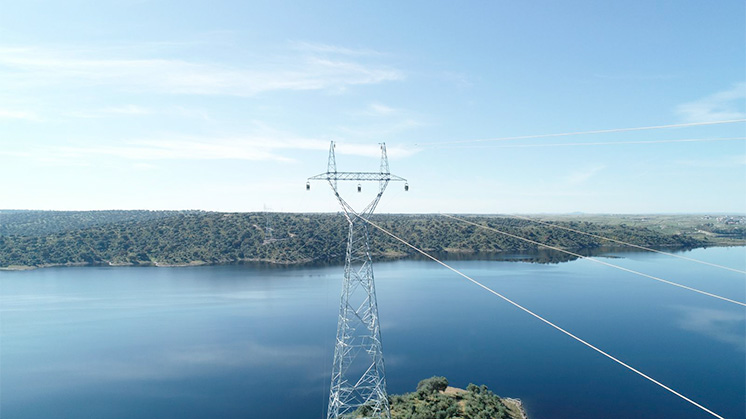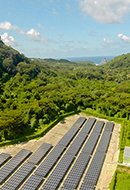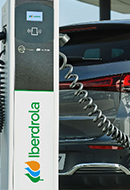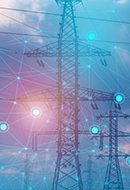Difference between high, medium and low voltage
High, medium and low voltage: do you know the difference?
Electricity flows through a complex circuit in which electrical voltage is essential. When talking about this path, concepts such as high voltage, medium voltage or low voltage are often mentioned, with different characteristics and applications. Discover their different peculiarities and uses.

Press a switch to turn on the light. Heat the coffee pot. Switch on the computer. These are simple, everyday gestures that we repeat every day. But for this routine to be fulfilled, a complex process needs to be developed and maintained, starting with the generation of electricity in a power station and ending with the distribution of electricity in the home.
In all this journey that electricity makes through networks and installations, the concept of electrical voltage is especially relevant. Learn what it is, what it is used for and its different types.
What is electrical voltage?
Electrical voltage or potential difference is a physical quantity that quantifies the difference in electrical potential between two points. It can also be defined as the pressure of an energy source in an electrical circuit that pushes charged electrons (current) through a conducting loop. This allows, among other things, light to be generated. Electricity passes from one body to another with voltage.
For example, if two points (A and B) that have a potential difference are joined through a conductor, a flow of electrons takes place. The point with the higher potential (A) gives up some of its charge to the point with the lower potential (B) through the conductor until the two points equalise their electric potential. This "transport" of charge is known as electric current.
Voltage is usually expressed in units such as kilovolts, which is equivalent to a thousand volts (symbol kV). Thus, for example, a conventional battery has 1.5 volts, while a power line adds thousands of volts and a lightning bolt, millions.
The ability to easily vary voltage underpins the operation of the electrical system. This is known as alternating current, a historic invention of the engineer Nikola Tesla that allows electricity generated in power plants to be raised to a high voltage and transported over enormous distances with very little energy loss. At the destination, it is easy and cheap to use transformers to distribute it at medium and low voltage. This breakthrough enabled the advent of the third industrial revolution.

Progress on the smart grid
Telecommunications trends and applications in the smart grid.

The solution for small communities
Microgrids are capable of supplying electricity to specific communities.

Electrical energy and its importance
It is versatile, efficient and has a low environmental impact with renewable sources.

The future of energy efficiency
The Internet of Energy aims at automating and regulating processes.
Types of tension
The types of electrical voltage refer to the types of electrical circuits that run on a power line. In other words, the voltage depends on the type of network. We can say that a voltage network with 30 kV is capable of transporting electricity over 30 km, although this is not a general rule but rather a rough idea.
These are the differences between high, medium and low voltage and their different electrical voltages and networks:
High electrical voltage: for transportation
High voltage lines are those above 36 kV (i.e. 36,000 volts), according to the International Standard of the International Electrotechnical Commission. Within this category, there are two sub-types: the first is high voltage with a power greater than 66 kV and equal to or less than 220 kV, and the second, greater than 36 kV and equal to or less than 66 kV.
High-voltage electrical installations are used to transport electricity over long distances from generation centres (wind, hydroelectric, solar, etc.) to transformer substations.
This type of voltage allows electricity to be transported without the risk of the conductor cables overheating or influencing electromagnetic phenomena. In addition, for safety reasons, all towers or cabling are deployed underground and placed outside urban areas to avoid accidents.
Medium voltage electricity: for distribution
Medium voltage lines are networks with a voltage between 1 and 35 kV (1,000 and 35,000 volts), according to the International Standard of the International Electrotechnical Commission. It is obtained in electrical substations, where electricity is transformed from high voltage to medium voltage.
Medium-voltage electrical installations enable electricity to be transported from substations to transformer stations, which supply power to localities. It is also used to supply large electricity consumers such as industries, airports or even hospitals.
Such lines may be overhead or underground and, for safety reasons, must meet a number of requirements.
Low voltage electricity: for consumer use
In order to be able to consume electricity in our homes, we need low voltage lines, which is the voltage used by most electrical appliances. This voltage is not the same all over the world: while in Europe it is around 230 V, in most of America it varies between 100 and 127 V, for example.
In the transformer stations, the medium voltage is converted to low voltage. Normally, these installations are located near the points of consumption and from there it is distributed to all homes, businesses, companies or places that require it.
Low-voltage lines are used in most electrical appliances, as they are less dangerous and, in addition, have installations protected by circuit breakers and differential switches placed at the consumption points.














